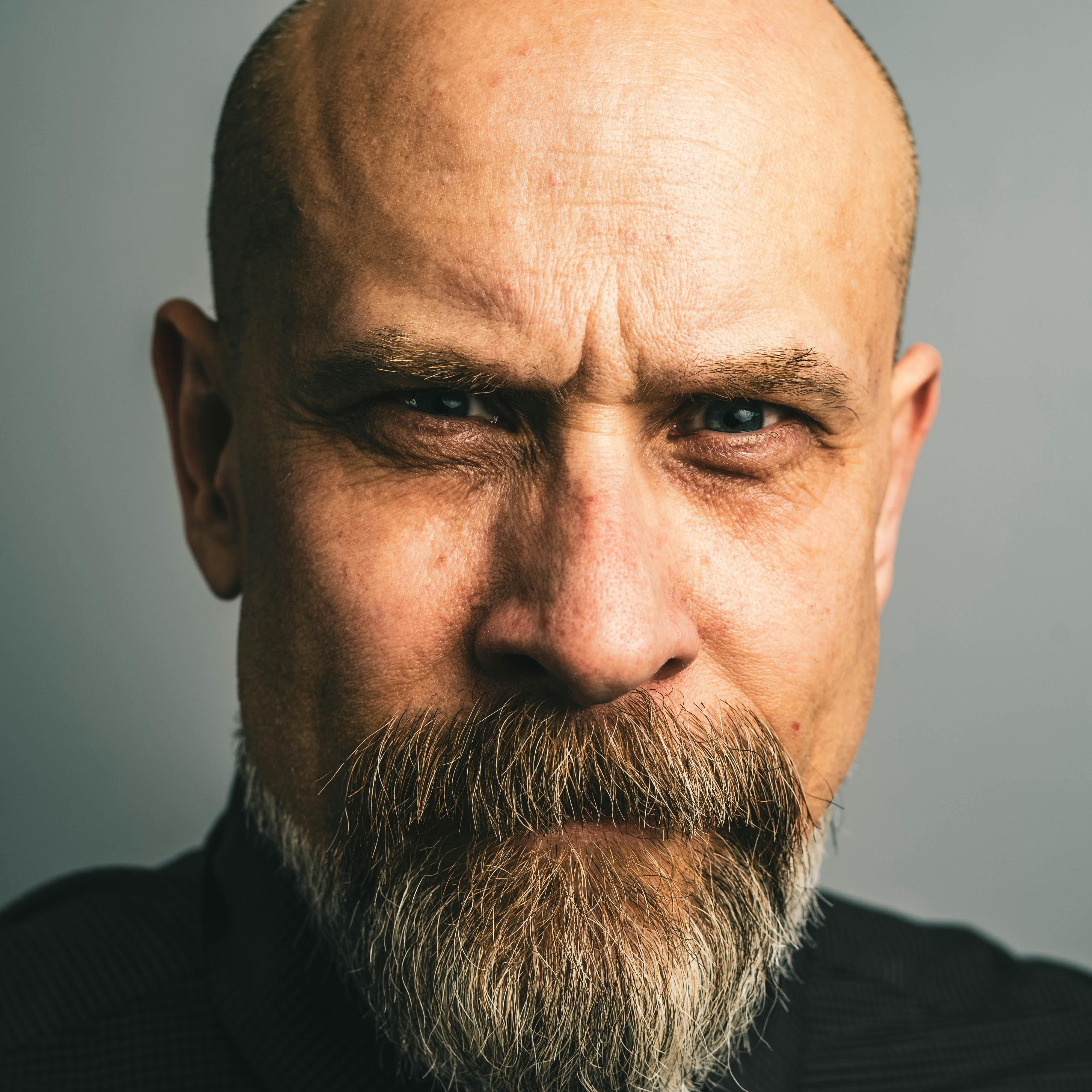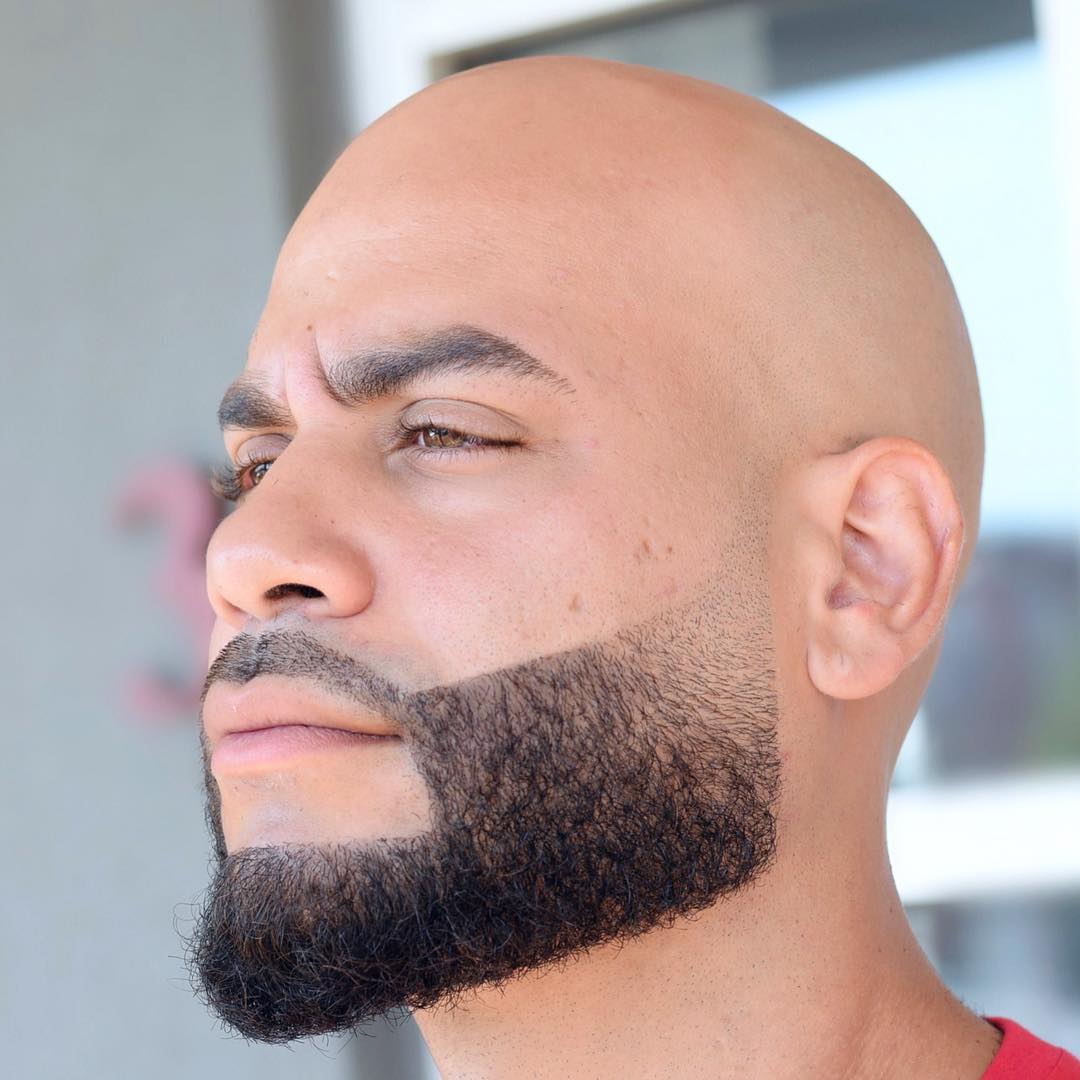Sometimes, a simple phrase or an observation about appearance can spark a lot of conversation, couldn't it? Like, when people talk about "bald kamala," it really gets folks thinking about hair and how it changes. This kind of discussion, you know, it often makes us think more deeply about hair loss itself, which is a very common experience for many people. It's interesting how a public figure's look can bring such a personal topic right into the spotlight, isn't that something?
Actually, when we talk about hair loss, we are referring to something quite common. Baldness, in simple terms, typically means a lot of hair loss from your scalp. It's a natural part of life for some, and it can show up in many ways. For some, it might be a gradual thinning, while for others, it could be more noticeable. It's a topic that touches many lives, and it's quite varied in how it appears.
So, this idea of "bald kamala" really opens up a conversation about hair changes we all see or might even go through ourselves. It's a chance to explore what causes hair to thin or disappear and what people do about it. We'll look at the facts about hair loss, straight from what we know, and how it impacts people every day, more or less.
Table of Contents
- Understanding the Nature of Baldness
- Why Hair Changes Happen: Common Reasons
- Recognizing the Signs of Hair Loss
- Ways People Approach Hair Loss
- Surgical Options for Hair Loss
- FAQ About Hair Loss
- Thinking About Hair Loss
***
Understanding the Nature of Baldness
Baldness, as a matter of fact, is a condition where you see an absence, or seeming absence, of your natural hair covering. It might suggest a conspicuous bareness on the head. This is a simple way to put it, really. When someone has little or no hair on their head, that's what we are talking about. It's a visual thing, quite literally.
Often, this absence of hair is due to excessive hair loss from the scalp. It's not just a little bit of hair falling out; it's more than that. The term "bald" implies a clear lack of hair, and it's something that people notice. It's a change in appearance that can be quite striking, you know.
The skin on the head, over time, can become quite flexible. It can stretch enough that, in some cases, some of it might be surgically removed. This is a procedure that aims to decrease the area of bald skin on the head. It's a way people try to manage the appearance of hair loss, in some respects.
Why Hair Changes Happen: Common Reasons
Hereditary hair loss, which happens with age, is the most common reason for baldness, actually. This means it runs in families, and it's something that many people will experience as they get older. It's a very typical reason for hair to start thinning or disappearing. It's just how some bodies are wired, you know.
Male pattern baldness is, in fact, most often the cause when we talk about hair loss. This kind of baldness follows a certain pattern, usually starting at the hairline or the crown. There are seven stages of male pattern baldness, which is pretty interesting. The early stages usually start in your 30s, but some people have signs as early as their late teens. It's a gradual process for many, apparently.
However, hair loss can also happen for other reasons, too. If you're losing hair in patches, for instance, it could be the result of something else entirely. It might be a medical condition, or it could be related to stress. Sometimes, a poor diet can also play a role in hair loss. So, it's not always just about genetics, which is good to know.
When the source of the problem is addressed, in most cases, hair grows back normally. This is a hopeful thought, isn't it? If the underlying issue is fixed, the hair often returns. But still, severe damage to the hair or scalp sometimes causes permanent bald patches. That's when the hair might not grow back at all, sadly.
Recognizing the Signs of Hair Loss
To tell if you're going bald, you can examine your hair in a mirror. Look to see if you have a receding hairline. This is a common sign, and it could be a clue that you're going bald. It's often one of the first things people notice, actually.
Another way hair loss shows up is as bald spots or bald patches. These are areas where the hair is completely gone, or nearly gone. It's a bit different from just a receding hairline, and it can appear in various places on the scalp. It's a clear indicator, you know.
Paying attention to how much hair you lose when you brush it or wash it can also be a hint. While some hair loss is normal every day, a noticeable increase might be a sign. It's about looking for changes in your usual hair patterns, more or less. Learn more about hair changes on our site if you're curious about daily hair shedding.
Ways People Approach Hair Loss
Some people, you know, prefer to just let their hair loss run its course. They leave it untreated and unhidden. It's a choice, and it's about accepting the natural process. There's a certain freedom in that, isn't there?
Others may choose to cover it up. They might use different hairstyles to make the hair look fuller. Makeup can also be used to camouflage thinning areas. Hats or scarves are also common ways to cover the head. It's all about personal comfort and preference, apparently.
There are also various treatment options available for hair loss. These can range from topical applications to medications. The choice often depends on the type of hair loss and its cause. It's worth looking into if you're concerned, really.
Understanding why this happens and what the treatment options are can be very helpful. Knowing your choices gives you a sense of control. It's about being informed and making decisions that feel right for you. You can learn more about why men go bald and what you can do about it, for example, if that applies to you.
Surgical Options for Hair Loss
Scalp reduction is one of the surgical ways to manage baldness. This process involves decreasing the area of bald skin on the head. It's a procedure where a surgeon removes some of the hairless skin. It's a direct approach to reducing the visible bald area, you know.
In time, the skin on the head becomes flexible and stretched enough that some of it can be surgically removed. This flexibility allows for the procedure to be done effectively. It's a careful process, and it requires a skilled hand. It's quite a transformation for some people.
Another technique involves using a tissue expander. After several weeks, this expander causes the skin to grow new skin cells. This new skin can then be used to cover bald areas. It's a way to create more skin for grafting or covering, which is pretty clever, actually.
These surgical methods offer more permanent solutions for some types of hair loss. They are usually considered when other treatments haven't worked or aren't suitable. It's a significant step, and it's something people think about carefully. You might want to learn more about hair loss treatments from a reputable source like the American Academy of Dermatology.
FAQ About Hair Loss
What are the most common reasons for hair loss?
Well, the most common reason for hair loss is typically hereditary hair loss, which often happens with age. Male pattern baldness is a very frequent cause within that. But, you know, other things like medical conditions, stress, or even a poor diet can also play a part. It's a mix of factors, really.
Can hair loss be reversed?
Sometimes, yes, it can be reversed. If the hair loss is due to something like a medical condition, stress, or a poor diet, and that underlying problem is addressed, then hair often grows back normally. However, severe damage to the hair or scalp can sometimes cause permanent bald patches where the hair won't return. So, it depends on the cause, more or less.
How can I tell if my hairline is receding?
To see if your hairline is receding, you can look at your hair in a mirror. Pay attention to the area around your temples and forehead. If the hair seems to be moving further back than it used to, or if it forms an M-shape, that could be a sign. It's about noticing gradual changes over time, you know. Discover ways to care for your hair here if you're concerned about your hairline.
Thinking About Hair Loss
The conversation around "bald kamala" really does highlight how much attention we pay to appearance, doesn't it? It reminds us that hair loss is a very real experience for countless people. It's a topic that touches on genetics, health, and personal choices. It's a part of life for many, and it's something people deal with in their own ways.
Whether someone chooses to let their hair loss show, cover it up, or seek treatments, it's a very personal decision. Understanding the various reasons why hair changes, and the options available, can help anyone facing this. It's about being informed and finding what feels right for you, basically.
So, the next time you hear talk about "bald kamala" or any discussion about hair, remember the broader context of hair loss. It's a shared human experience, in a way, and there's a lot to learn about it. It's a reminder that appearances are just one part of a person, and there's often a story of natural processes or personal journeys behind them. This kind of open conversation helps everyone, actually.



Detail Author:
- Name : Prof. Elliott Lesch
- Username : vernice.walter
- Email : pbatz@murphy.com
- Birthdate : 1978-04-14
- Address : 4062 Dejah Ridge Apt. 548 New Carolina, IL 57072
- Phone : 1-323-466-5361
- Company : McClure Ltd
- Job : Boiler Operator
- Bio : Harum quidem sed optio. Dolorum aut eum earum dolorem quis consectetur esse numquam. Explicabo voluptatem nemo eos.
Socials
twitter:
- url : https://twitter.com/sunny.towne
- username : sunny.towne
- bio : Consectetur est et provident eum et voluptas id voluptates. Neque delectus molestias eveniet architecto non repellendus numquam. Aliquam sed illo a atque.
- followers : 2988
- following : 1352
linkedin:
- url : https://linkedin.com/in/townes
- username : townes
- bio : Exercitationem enim itaque a ea cumque corrupti.
- followers : 4856
- following : 2080